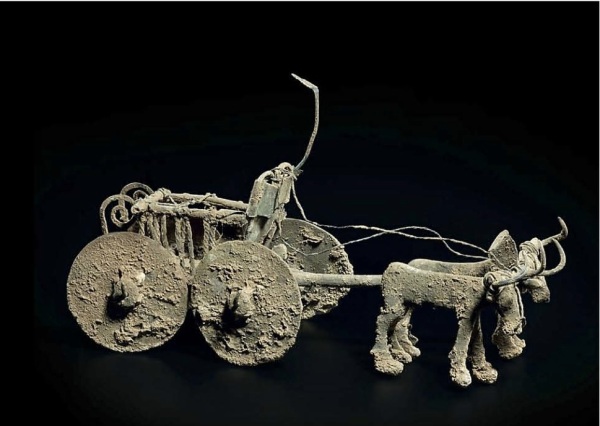Nice antiquities – where did they come from? Nagging questions about provenance

Lot 77. An Apulian Red-Figured Bell Krater – detail.
Attributed to the Schiller Painter, circa 380-370 BC
Estimate: £10,000-15,000 ($17,000-25,000)
Earliest dated provenance: “with V. Rosenbaum, Galleria Serodine, Ascona, Switzerland, 1970s.”
The e-catalogue for Christie’s Antiquities sale in London on April 2, 2014 has just gone live and there are some intriguing items, such as the ones illustrated here – but there’s also an issue of provenance. None of the works illustrated in this blog post has a datable pre-1970 provenance – as noted in the provenance section of each catalogue listing – and there are many, many more like them in the sale. The “pre-1970″ refers to the date of an international UNESCO convention aimed at halting the looting of antiquities. As the New York Times reported: ‘In 2004 the Association of Art Museum Directors declared “member museums should not acquire” any undocumented works “that were removed after November 1970, regardless of any applicable statutes of limitation.”’ Numerous American museums – including the Metropolitan Museum of Art in New York, Boston’s Museum of Fine Art and the Getty in Los Angeles – have been forced to return looted antiquities to their host countries.
Take the Roman Wall Mosaic show below – how many times have we seen images of walls at archaeological sites with gaps that once contained mosaics? Recently, federal officials seized control of a sarcophagus of a Roman noblewoman worth $4 million that was allegedly looted from Italy in the 1970s or early 1980s, according to the New York Times, and had been offered for sale by Phoenix Ancient Art. I cannot assert these are looted – but – as the repatriation of antiquities continues to make international news, one wonders why any potential buyer would consider acquiring works without clear datable pre-1970 provenance.

Lot 77. An Apulian Red-Figured Bell Krater
Attributed to the Schiller Painter, circa 380-370 BC
Estimate: £10,000-15,000 ($17,000-25,000)
Earliest dated provenance: “with V. Rosenbaum, Galleria Serodine, Ascona, Switzerland, 1970s.”

Lot 30. An Anatoilian Bronze Chariot
circa 2nd Millennium BC
10.25 inches long
Estimate: £40,000-60,000 ($67,000-100,000)
Earliest dated provenance: “Art Market, Maryland, USA, 1989.”

Lot 106. A Roman Marble Mosaic Panel.
circa 3rd-4th century AD
34 x 28 inches
Estimate: £20,000-30,000 ($34,000-50,000)
Earliest dated provenance: “Anonymous sale; Vente de Ricqles, Paris, 1st October 1999.”

